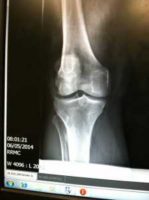Author Interviews, Breast Cancer, Brigham & Women's - Harvard, JAMA, Mammograms / 03.05.2018
What’s the Prognosis If You Get Breast Cancer After a Negative Mammogram?
MedicalResearch.com Interview with:
Anne Marie McCarthy, PhD
Department of Medicine
Massachusetts General Hospital and Harvard Medical School
Boston
MedicalResearch.com: What is the background for this study? What are the main findings?
Response: Mammography is effective in reducing breast cancer mortality. However, it is not perfect, and approximately 15% of breast cancers are diagnosed despite a negative mammogram before the next recommended screening.
MedicalResearch.com: What should clinicians and patients take away from your report?
Response: Using data from the NCI funded PROSPR (Population-Based Research Optimizing Screening through Personalized Regimens) Consortium, we determined the rates of cancer diagnosis within one year following a negative or positive screening mammogram. The rate of cancer diagnosis within one year of a negative mammogram was small (5.9 per 10,000 screenings), but those cancers were more likely to have poor prognosis than cancers diagnosed after a positive mammogram (43.8% vs. 26.9%). As expected, women with dense breasts were more likely to have cancer diagnosed within 1 year of a negative mammogram. However, breast density was not a good predictor of poor prognosis among women diagnosed with cancer after a negative mammogram. Younger women were more likely to be diagnosed with poor prognosis breast cancer after a negative screening mammogram.
(more…)










